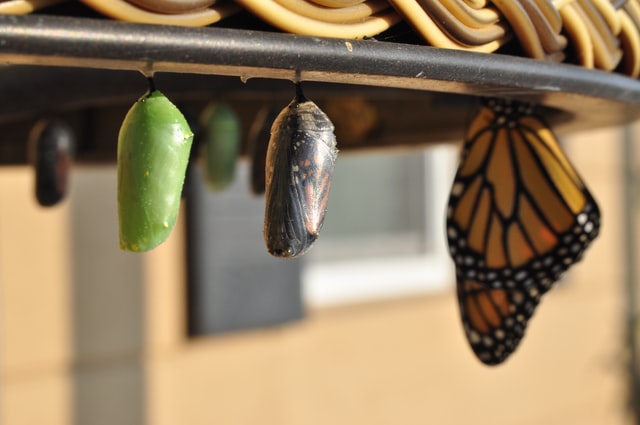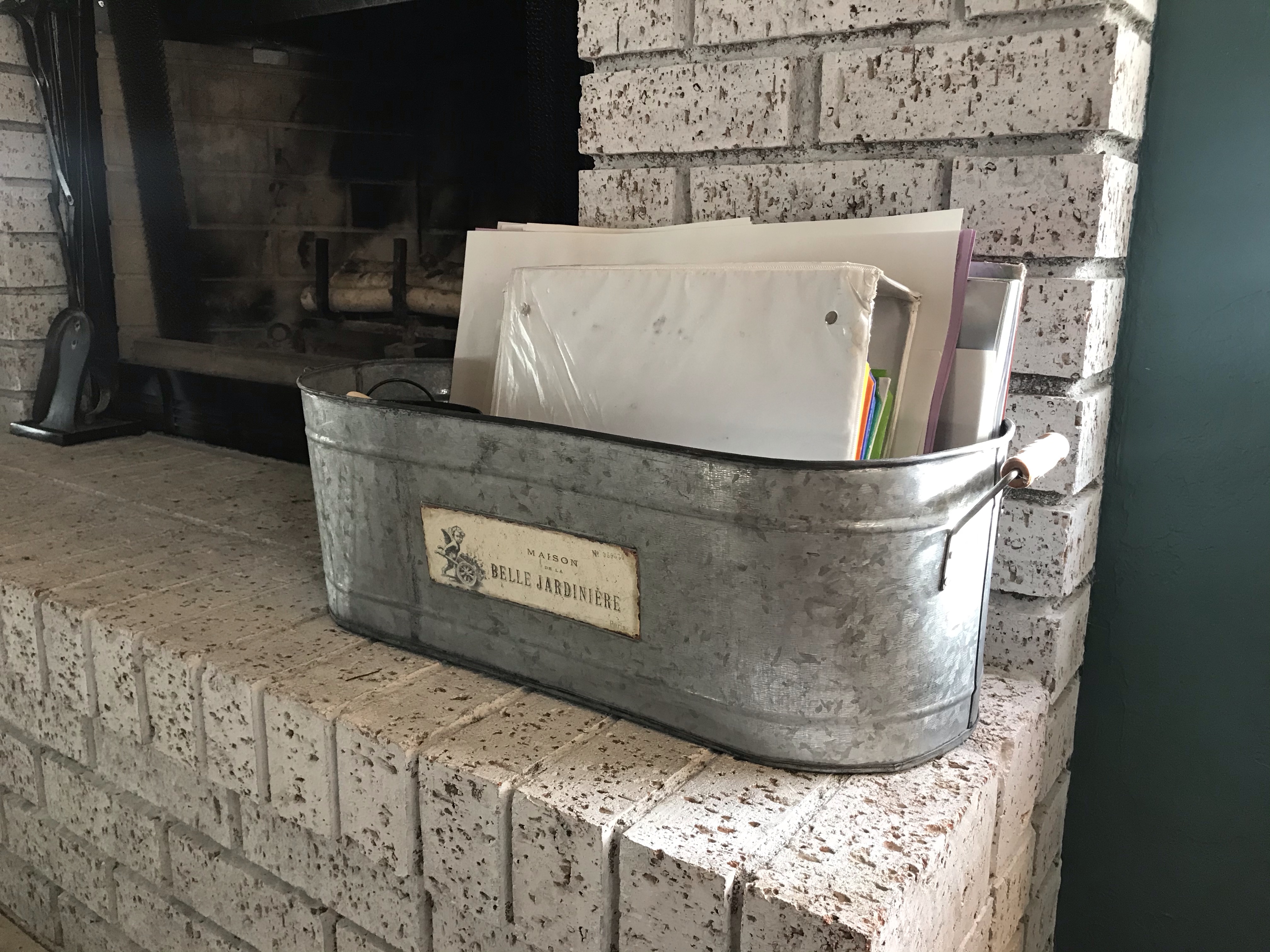
Evolve.
Yep. Gave it away right at the beginning. You’re welcome bottom-liners.
This principle is always part of creating successful spaces. Now, it is essential.
Normally, we have much more time—and therefore, greater ease—to build this element into our lives and environment. But now, needs and circumstances are changing faster than most of us feel equipped to manage.
And with that, being willing to evolve moves from the background into the number one, tippy top, most important spot, when it comes to planning our spaces.
How do you evolve, practically?
1. Identify Your Processes

What activities have been moved home? What routines do you now need to make space for? Be as specific as possible: Zoom meetings, distraction-free work calls, 8th grade science experiments, yoga, art class, etc. Make a list.
Often, people simply try to replicate their former work or school environment at home. If you have the space and resources to do that, fantastic! But most people just don’t and are left disheartened and frustrated.
Focusing on the process allows new solutions for your current environment to rise to the surface.
2. Get Creative
Do you absolutely need a dedicated desk for your work? Would your energy and money be better spent finding a portable container for supplies, allowing you to work with existing furniture instead of cramming in more?
With my husband in our home office and my son in “school” in our open-concept main spaces, I’ve made the bedroom my landing spot. A lap desk sits beside the bed when not in use, I’ve rigged up an extra charging cord for my laptop, and I’ve outfitted the nightstand with the most necessary office supplies. Yes, I know what they say about not doing work in the bedroom, but these are extraordinary times. There are other ways to help one’s brain transition from work to relaxation: wind-down rituals, a change in lighting, changing clothes, etc.

We must bend if we don’t want to break.
Could you take Zoom meetings in the bathroom? Hear me out! Bathrooms are consistently the most private and quiet places in a home, SO, if you won’t leave others desperately banging on the door for it’s (uh, hum) “traditional” use, consider it. Put a folding chair in front of the door so it’s not obvious you are in a bathroom. Bam: neutral background + quiet = process supported.
For more tips on better Zoom calls–including a bathroom example– check out my YouTube video below:

We already had a desk in the family room before the pandemic. It was used for homework and gaming. Now, it’s full-time school. However, it isn’t a large workspace for that many hours of school, and it doesn’t offer any storage.
Since we don’t want to buy a whole new desk for what we hope is a temporary situation, we needed another solution to papers and piles all over the family room.
Enter, the former flower bucket. This container used to hold a mass of hydrangeas for decoration. Now, it holds my son’s notebooks, papers, and art supplies and sits within easy reach of his desk. It supports the process needed (corralling additional school materials), it doesn’t add additional furniture to an already full room, and it was free!
Creatively edit: Is there anything you can remove? It doesn’t have to be forever. But doesn’t it makes sense that if we add to the activities performed in our homes and hours spent there, we might need to take some things away?

If it’s not essential or bringing you abundant delight, it might need to have a “time out.” The extra breathing room—spatially, visually, and mentally–will go a long a way in helping you survive new adjustments.
Being creative–which includes thinking outside the obvious or the ideal–is key to adapting.
3. Stay Flexible

I know. Easier said than done—especially for those of us who approach these situations as problems to be solved. We want to fix it and forget it. But with so much uncertainty on the horizon, we would do better to approach these adjustments to our homes (and lives) as
a tension to be managed.
Practically, it will be easier to remain flexible and adapt if you limit the amount of time and money you invest in these adjustments. Our needs have shifted so much in the last year and are likely to shift more before we reach that illusive “new normal.”
Invest some time and energy considering what you need and how you might approach those needs (# 1-2), but after that, limit the resources you spend carrying out that plan. Doing so allows you to hold loosely.
Holding loosely leaves room for making adjustments as you need them—because the changes keep coming!
There will be a day when our environments will have less demands on them, we’ll be less confined, and it will all make more sense. Until then, if we want to thrive, or even just survive, we must
Evolve.
*As I’m typing, my daughter (a college freshman) texts to say she and ALL the students on her floor are being relocated to make room for “quarantine housing.” Yep. Change, change, change. The only way to survive is to evolve.

Photo Credits in order, from Unsplash (unless otherwise noted):
Jeremy Zero, Suzanne D. Williams, Glenn Carstens-Peters; Sincerely Media; Tim Gouw on Pexels.com; Joanna Kosinska; kalei peek; Tomas Sobek; (desk and flower bucket pictures, mine); Stephanie Harvey; Jeremy Bishop; Miguel Bruna








